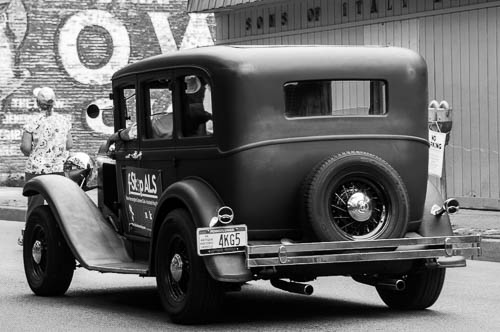
Strip District, Pittsburgh

Places and Their People, History, and Lore

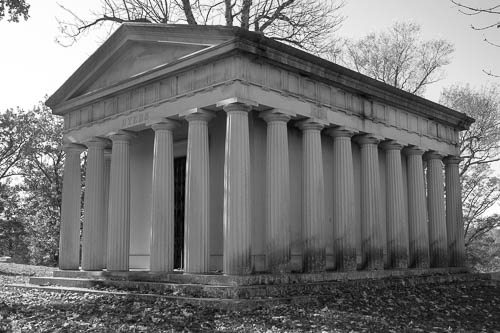
I took a guided tour of Allegheny Cemetery, Pittsburgh, in 2018. This tour included the Byers Mausoleum. The industrialist Eben Byers now rests here, inside of a lead-lined coffin.

Lochry’s Defeat started in 1781 when Archibald Lochry raised a militia unit in Westmoreland County, Pennsylvania. About one hundred men set off down the Ohio River from Fort Pitt (which later became Pittsburgh). A few weeks later, the entire group ended up captured or killed.
Archibald Lochry was a Westmoreland County leader during the American Revolutionary War. The British occupied Detroit. The American colonists in Western PA were at war with the British and their Native American allies. Many of these Native American allies attacked from the Ohio territory west of PA.
(The colonists referred to the British general in Detroit as “Hair Buyer Hamilton” because the British paid for the scalps of American colonists.)
Thomas Jefferson, then the governor of Virginia, promoted George Rogers Clark to the Virginia rank of Brigadier General. In 1781, Clark left Fort Pitt to navigate down the Ohio River into the Ohio territory.
Lochry and his militiamen followed in their own flotilla some time later. Lochry was supposed to meet up with Clark’s expedition downriver. Unfortunately, after a number of issues including supplies, communication, and the threat of desertions among Clark’s men, Lochry missed Clark several times. Lochry never caught up to Clark.
In August 1781, Joseph Brant and George Girty led Native Americans allied with the British. (George Girty was Simon Girty‘s brother.) This group set out looking for Clark.
Brant and Girty instead surprised Lochry, who had stopped on the banks of the Ohio River in present-day Indiana. Brant and Girty ambushed Lochry and killed him. They killed dozens of his men and took the rest prisoner.
The families back in Westmoreland County didn’t learn about this until a significant time later.
The Wikipedia entry for this event also refers to it as the Lochry Massacre. I chose to not use the word “massacre” because indignenous people were involved in the victory. I explained my choice of semantics in this other blog post.
If you want a much more detailed account of Lochry’s Defeat and Clark’s expedition, by all means go read the Wikipedia entry on this. The Wikipedia page includes a photo of the Lochry’s Defeat site in Indiana. I also saw in this photo some military equipment that I believe came from a 20th century war. To be honest, at first glance I mistook this equipment to be an empty boat trailer. (This is IS along the Ohio River banks.)
I wrote today’s blog post for all of the people who, like me, don’t remember learning about this in high school history class. In fact, I never even heard this story from my Westmoreland County family members who first told me about Simon Girty. I learned about Lochry’s Defeat from the historical fiction novel “The Day Must Dawn” by Agnes Sligh Turnbull.
Just to keep this in context with other local history, Lochry’s men from Westmoreland County set off from Fort Pitt in the summer of 1781. Lochry’s Defeat happened in Indiana in August 1781. The Crawford Expedition set off down the Ohio River in May 1782. (William Crawford led this expedition. Most of his militiamen came from Westmoreland and Washington counties.) The British and their Native American allies captured and executed Crawford in Ohio in June 1782. Simon Girty was present at Crawford’s execution. Then, the British and their Native American allies attacked and burned Hannastown in Westmoreland County in July 1782. The Revolutionary War ended in 1783.
According to Wikipedia, Joseph Brant allegedly got into a violent, drunken brawl with Simon Girty over the issue of whether Brant or George Girty deserved the credit for Lochry’s Defeat. Brant was a Mohawk military leader and Girty (who was himself raised by Native Americans) has an infamous reputation in frontier America. At least one Canadian monument refers to Simon Girty as a British Loyalist. Keep this in mind when you read such tales.

I own a signed copy of Pittsburgh: The Story of An American City, written by Stefan Lorant with several contributors. I purchased it for $5 from a used bookstore. The book came apart in several places at the binding. The book contains almost seven hundred pages of Pittsburgh history and photos.
This book’s Chapter 3 The City Grows by Oscar Handlin includes a sidebar titled Pittsburgh in the News. This sidebar includes the following item:
“Joe Barker, a colorful street preacher, was arrested in 1849 when he was involved in a riot while delivering one of his many tirades against Catholicism. He was thrown into jail and while in prison he was elected as mayor of the city. After serving for one year he was defeated for re-election and sank into obscurity. He died in 1862 when run over by a train.“
(Wikipedia taught me that the train decapitated Mayor Joseph Barker. He is buried in Allegheny Cemetery.)

Pittsburgh had a department store chain called Joseph Horne’s, or Horne’s Department Store, or simply Horne’s.
An electric Christmas tree decorated the building’s corner each holiday shopping season.
Horne’s merged with another chain in 1994. Then, the building which housed Horne’s downtown flagship store became offices for an insurance company (Highmark).
However, this tree still graces the building each year from the week before Thanksgiving until New Year’s.
Here is a photo of the building and its tree.
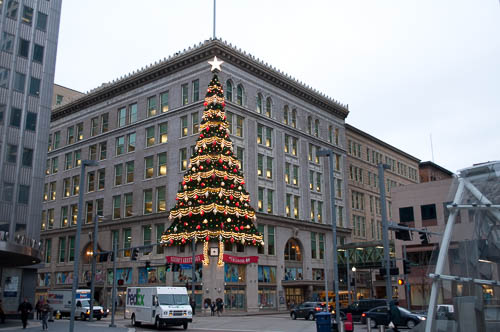
Everything that I know about Horne’s Department Store came from “American Elegy: A Family Memoir” by Jeffrey Simpson. This particular book detailed the author’s family’s experiences in Parnassus, a sort-of Pittsburgh suburb. In the Chapter titled “Parties (Quint and Ruby),” the author wrote the following about his step-grandmother Ruby’s affinity for shopping at the downtown Pittsburgh Horne’s:
When my mother and Ruby were young women in the late 1920s and 1930s, there was a lounge on Horne’s mezzanine where you could wait for friends. The lounge had a book in which you could leave messages for your chums if you had to leave early or had dashed up to Lingerie for a quick purchase while you were waiting; it was an amenity that seemed to belong to a period of orange minks and nose-tip veils, when girls fresh from college, eager with their first salaries, met “in town” for lunch on Saturday.
Simpson wrote that Ruby grew up “poor” and thus as soon as she received her first very own paycheck, she spent it at Horne’s. Ruby referred to Horne’s as the “good” store. She relished the chance to be seen shopping there. Simpson noted that the Parnassus community and Ruby herself thought that Ruby had married up (to a widower with a good family and a good job). That Ruby’s clothes, purchased from Horne’s, helped her to achieve this marriage.
Simpson concluded:
The Horne’s boxes, cream-colored pasteboard with Jos. Horne Co. in light, bright blue on the lid, represented for Ruby the life she had made for herself.
My own maternal great-grandma worked for Horne’s. However, I don’t have any stories about her retail career.
I myself work directly across the street from the old downtown Horne’s building. I never shopped for clothes there. I grew up in rural Pennsylvania. I started working in Pittsburgh years after Horne’s closed.
When I interviewed for my job, the building housed an Old Navy store.
By the time that I started my job, the Old Navy was a Rite Aid.
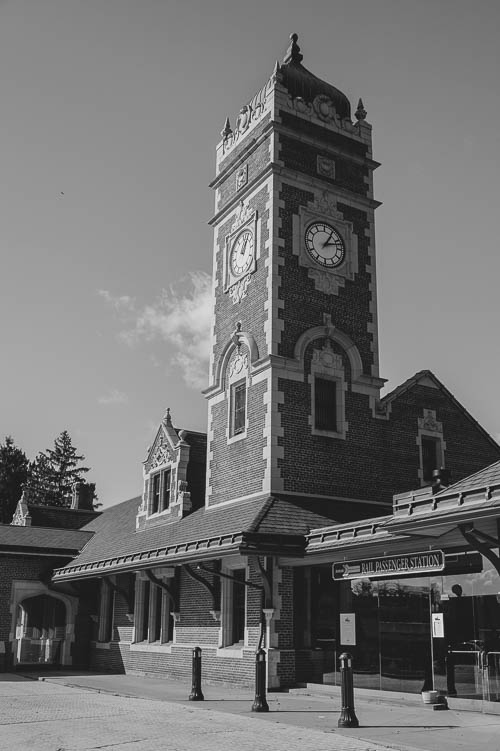
I have family who lived in the Greensburg-ish, Pennsylvania, area in the early 1900’s. A bunch of them died young and / or poor, so I can’t tell you much about them. However, because of them, I got stuck on Western PA history.
I read this historical fiction novel titled “Remember the End” by Agnes Sligh Turnbull. Turnbull was a New York Times bestselling writer from New Alexandria, PA. How sad that Turnbull didn’t have a snappier pen name! Like Mark Twain. T’would be easier for me to blog about her.
Turnbull graduated from Indiana University of Pennsylvania (IUP). (My sister, a double IUP grad, told me that IUP used to have a Turnbull Hall. This got knocked down and replaced with a parking lot.)
Anyway, Turnbull wrote Remember the End. This novel began in the late 1800’s in Scotland, then moved to the Greensburg area, then ended in Greensburg around 1917.
(The book didn’t actually list dates. I only knew that the book ended around 1917 because at the end of the story, several of the characters talked about fighting in the War (World War I). The War started in 1914. The United States entered the War in 1917. As an FYI, my own great-grandfather did actually fight in this War. He got captured by the Germans and lost the use of his arm in this same War. He returned to his farm in Westmoreland County, and he named one of his mules after the German kaiser.)
At the very beginning of Remember the End, (the very poor) Alex McTay left his home in Scotland. He emigrated to Pennsylvania. He fell in love with Maggie, a (poor, but not quite as poor) Westmoreland County horse trader’s daughter.
Alex married Maggie. He opened coal mines. He became a millionaire before his 35th birthday. He built a fancy home for Maggie in Greensburg.
I think that Turnbull based the protagonist on a hybrid of Andrew Carnegie and Henry Clay Frick. At one point in the story, McTay referred to Andrew Carnegie as his hero or his role model or something.
Unlike Andrew Carnegie, McTay didn’t become a philanthropist.
McTay deliberately ruined his business rival’s life after the rival humiliated him at a fancy Greensburg party.
Remember the End haunts me because my family lived in Western PA during this same time frame. Fictional Alex McTay’s fortune could very well have been built upon my family’s backs.
I posted above a photo of Greensburg’s train station. The Pennsylvania Railroad built this station in 1912. So, if Alex McTay existed in real life, he and his family could have travelled through this station. Did Turnbull visualize Alex McTay in this station?
Turnbull is now buried in New Alexandria. Remember the End is now out of print. I purchased my copy (used) from Amazon this month.

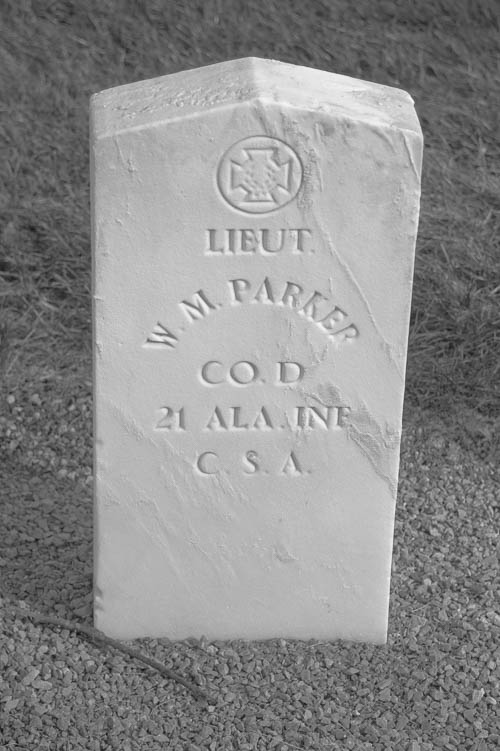
I took this at the Allegheny Cemetery Soldiers’ Lot, Lawrenceville, Pittsburgh, PA. This headstone marks the grave of a Confederate soldier from the American Civil War. (C.S.A. stands for “Confederate States of America.”)
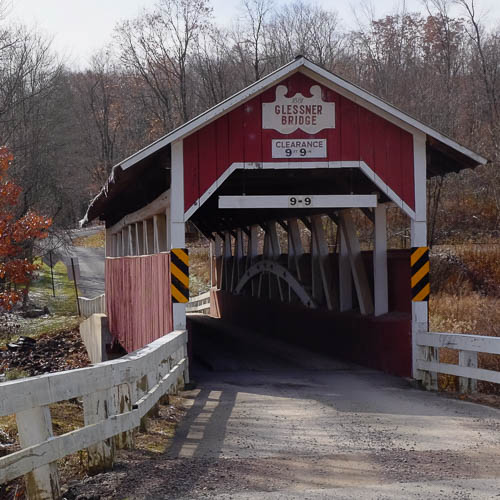
I visit the Flight 93 National Memorial during some trips to my hometown of Berlin, PA. I travel from Berlin to the memorial on a series of back roads. (These roads are a much more direct way for me than the posted route on U.S. 30 / Lincoln Highway.)
On each trip, I pass signs for the Glessner Bridge. Tobias Glessner built this bridge in 1881. The bridge sits on the National Register of Historic Places.
Only five miles separates the Glessner Bridge from the Flight 93 National Memorial.
I visited the bridge last weekend.
If you visit the bridge, be mindful that you will leave the “main drag” of Route 30. You will travel past working farms. Last week, I had to slow down for chickens on the road. I also saw an Amish buggy. In other words, PAY ATTENTION as you drive. STAY OFF OF YOUR PHONE.
(Sidenote: Both my mother and my mother-in-law lived in rural Pennsylvania at points in their lives. Both women told stories of having to stop their cars for cows sitting in the middle of various farm roads. It happens.)
Also, here’s the barn that sits next to the bridge.

